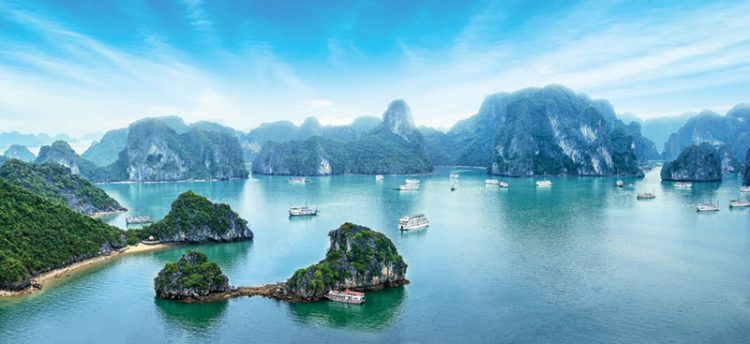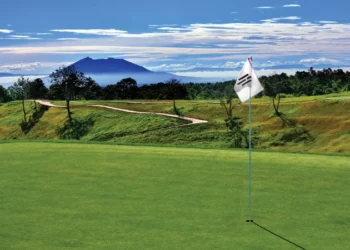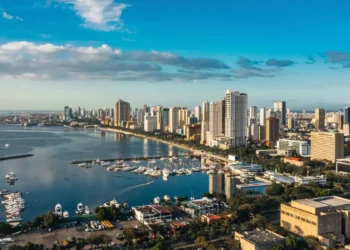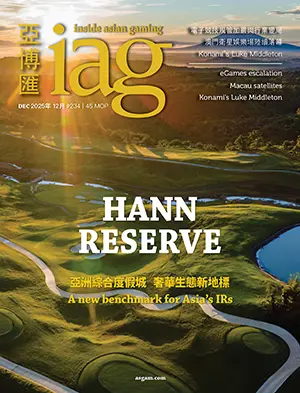Buoyed by a fast-growing economy, Vietnam is transforming itself into a diverse tourist destination blending ancient traditions with modern-day luxury.
Renowned for its unique blend of history and culture, unblemished landscapes and manmade wonders, vastly contrasting regions and authentically friendly people, Vietnam is rapidly emerging as a powerhouse on the global tourism scene.
The Southeast Asian nation, bordering Cambodia and Laos to the west and China to the north, with the turquoise waters of the East Sea running the full 3,260km length of its east and south coasts – attracted a record 18 million international visitors in 2019, up 16.2% year-on-year.

Now one of the fastest growing economies in the world with real GDP growth of 7.0% in 2019 – placing it 11th globally and equal fastest in Asia alongside Cambodia – Vietnam is being rapidly propelled by travel and tourism which contributed 9.1% of that GDP growth last year .
And, the COVID-19 pandemic aside, it doesn’t look like slowing anytime soon with the government targeting a GDP contribution from tourism of between 15% and 17% by 2030.
“Vietnam has come a long way,” explains Steve Wolstenholme, CEO of Hoiana’s joint venture operating entity, Hoi An South Development Ltd.
“Vietnam still has that young person’s appeal because of the price point, but it is maturing. People may have visited here 10 years ago as backpackers, but many of those people want to come back and have a different experience that is a little more upscale.
“The actual parameters of the clientele coming into Vietnam are evolving to a more sophisticated, slightly more upscale clientele and there is now that broad range of facilities available to suit.”
The explosive growth of Vietnam’s tourism industry is reflected in hotel room supply. From just 51,000 rooms nationwide in 1996, Vietnam is now home to almost 650,000 rooms of which 130,000 were built in three short years from 2016 to 2018.
The luxury segment has been a standout contributor to this growth, comprising 97,098 of the country’s hotel rooms across 466 hotels including 152 rated five-star. Figures from the Vietnam National Administration of Tourism show that 50 five-star and 68 four-star hotels were opened in 2019 alone.
Yet still there is more to come. According to research conducted by global hotel construction database TOPHOTELPROJECTS, there were, as of August, 116 hotel projects boasting another 43,947 rooms currently in Vietnam’s development pipeline of which 44 were due to open within this year, notwithstanding any potential COVID-induced delays.
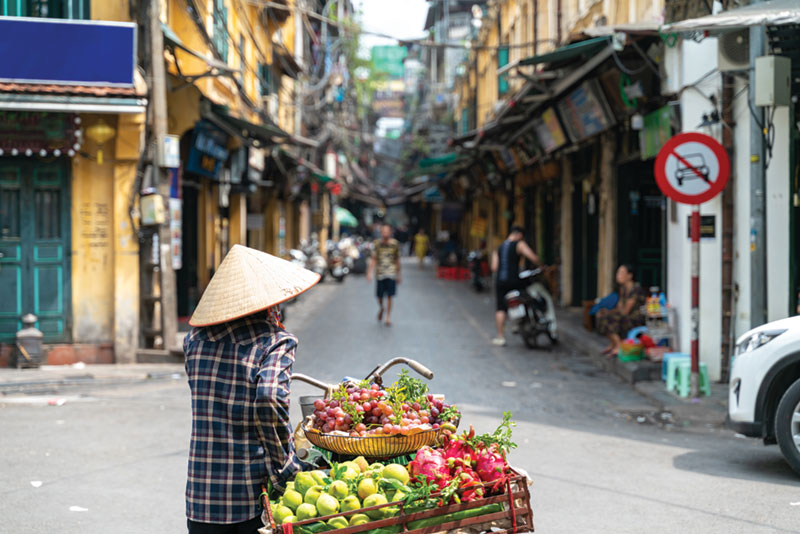
The southern powerhouse that is Ho Chi Minh City will welcome the lion’s share of those with 18, however it is the resort island of Phu Quoc coming in second with nine, ahead of the capital city of Hanoi and coastal towns of Hoi An and Cam Ranh, each with eight.
Such diverse geographical spread highlights exactly why Vietnam is becoming a global tourism hotspot. Visitors can head south to experience the country’s biggest city or to learn more about its modern history, north to discover the traditional political center complete with its unique mix of French and Chinese architecture, or to Central Vietnam for a more traditional cultural experience and to laze on its world famous beaches.
Southern Vietnam, said by some to be the most openly friendly and hospitable region of Vietnam, is best known for the vibrant streets and never-ending nightlife of Ho Chi Minh City, formerly known as Saigon. It also boasts some truly remarkable historical sights, such as the War Remnants Museum providing an emotionally challenging look back at the Vietnam War, and the Cu Chi Tunnels – the underground tunnel network used by the Viet Cong to move about beyond the reaches of American soldiers.
The south is also home to the sprawling Mekong Delta, a vast array of waterways centered around the Mekong River and home to an extraordinary array of wildlife.
To the north, Hanoi is renowned as Vietnam’s cultural melting pot, highlighting the influence of past settlers via its architecture and famous street food, while directly to the east is the country’s most famous tourist attraction, the world heritage listed Ha Long Bay with its 1,600 individual islands across 43,000 hectares.
Finally to Central Vietnam, famous for the old town of Hoi An with its incredible cultural traditions and for some of the nation’s finest beaches, where white sand and turquoise waters stretch as far as the eye can see.
“Central Vietnam is definitely a resort beach community,” says Wolstenholme.
“That’s what people come here to enjoy, the beach experience, but also to have the cultural experience of Hanoi without having to go too far.
“Unlike Hanoi which is more vintage or Ho Chi Minh City which is quite dynamic, with a very large population, Central Vietnam is all about culture and leisure, but the great thing about Vietnam is that people can come and experience the whole lot.
“If we look at Vietnam as a destination, we still lag behind places like Thailand but in terms of growth we are in a very good position to compete with destinations that are more mature in terms of attracting international visitors.”
 It’s not just travelers recognizing what Vietnam has to offer, Wolstenholme notes. In recent years, the central government itself has made an increasingly concerted effort to promote Vietnam to the world both as a tourist destination and as Southeast Asia’s emerging investment hub.
It’s not just travelers recognizing what Vietnam has to offer, Wolstenholme notes. In recent years, the central government itself has made an increasingly concerted effort to promote Vietnam to the world both as a tourist destination and as Southeast Asia’s emerging investment hub.
Long renowned for its tough visa policies, Vietnam began easing its entry requirements in 2015 when it expanded its visa waiver program to include 24 countries, including the likes of South Korea, Singapore, Malaysia, Japan, Taiwan and the Philippines in Asia, plus the UK, Germany, Italy and France among 10 European exemptions.
Three of those – South Korea, Japan and Taiwan – ranked in the top four source markets for tourist arrivals in 2019 with 4.3 million, 952,000 and 926,000 arrivals respectively. China was the largest single source of tourists with 5.8 million, comprising 32% of all visitation.
Tourism aside, the government has indicated clear intent to pursue long-term economic prosperity by way of Foreign Direct Investment (FDI). Last year Vietnam achieved a record US$20.38 billion in FDI, up 6.7% over the US$19.1 billion achieved a year earlier, which itself had jumped 9.1% over 2017 levels.
The industrial and manufacturing sectors have been the largest contributors, with Vietnam representing a lower-cost option for many Asian companies to base their production facilities. South Korea was the number one contributor to FDI in 2019 at US$7.92 billion or 21% of the total, followed by Hong Kong with US$7.87 billion, Singapore with US$4.5 billion, then Japan and China not far behind.
On 1 January 2021, an amended Law on Investment will take effect aiming to further streamline Vietnam’s foreign investment process. The key changes are the removal of some industries, including logistics and freight transport services, from lists that currently limit or exclude foreign investors based on various criteria, and more clarity on such issues as foreign ownership caps and M&A activity.
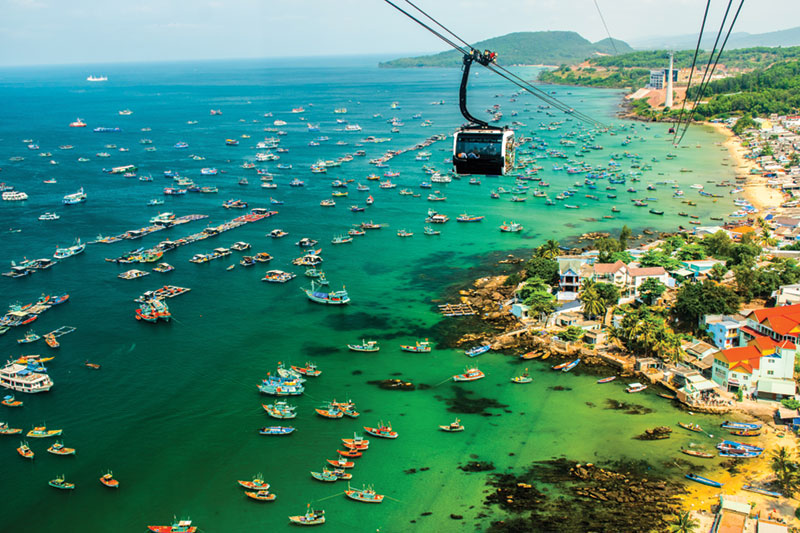
According to a research report by Asia-based international law firm King & Wood Mallesons, “There is an increasing recognition in the highest governing levels in Vietnam that the government should proactively attract and select investment projects of high quality, with an emphasis on advanced, clean technology and environmental protection.
“There is also a growing recognition that Vietnam needs to diversify both source and form of foreign capital and increase synergy between foreign investment activities with the remaining domestic market to ensure the self-sufficiency and independence of the national economy.
“Such an approach was set out in [Vietnam’s] 10-year foreign investment strategy until 2030 … and is expected to become even more relevant in the post-COVID-19 landscape.”
Among the key sectors upon which the government has already laid out investment criteria is tourism, and more specifically the development of high quality integrated resorts with casinos.
In March 2017, the government issued Decree 03/2017, which included two key additions to Vietnam’s casino law. The first was to slash the minimum investment requirement for foreign companies to develop a casino resort from US$4 billion to US$2 billion.
Second was a long-awaited three-year pilot scheme to allow Vietnamese locals to gamble in three casinos to be granted approval by the Vietnamese government. Only one of those, the unfortunately named Corona Casino on Phu Quoc Island, has opened for locals so far.
The Ministry of Finance (MOF) earlier this year released a report recommending further amendments to Decree 03/2017, including the removal of a requirement for casino and integrated resort investors to pay at least 50% of total investment capital for a project before it can be granted its license. According to the Ministry, such a requirement is not feasible for projects being developed in regions lacking infrastructure where the investor may also need to inject further funding into infrastructure improvements.
It is also pushing for casinos to be allowed to advertise anywhere within their region rather than only in entry points, such as airports, as per current regulations.

While it remains to be seen what impact these measures might have on foreign investors, there has already been considerable movement on the integrated resort front in recent years.
The Grand Ho Tram Strip, located two-and-a-half hours east of Ho Chi Minh City by car, became Vietnam’s first international standard integrated resort when it opened in 2013, followed early last year by Corona Resort & Casino on Phu Quoc. Suncity’s US$4 billion Hoiana project near Hoi An recently held an exclusive preview opening of some facilities, including Hoiana Suncity Casino, with the Grand Opening to be held in 2021.
There are also another two projects still in the development stage: KN Paradise Cam Ranh Integrated Resort in Vietnam’s Khanh Hoa Province, and another in the Van Don Special Economic Zone in Quang Ninh Province.
The importance of all five projects to Vietnam’s development is summed up by the Quang Nam Department of Culture, Sports and Tourism, which told Inside Asian Gaming that the impending Grand Opening of Hoiana in 2021, “creates a new attractive tourism product, with a variety of entertainment services that will attract tourists to visit, relax and extend their stay longer and spend more.
“At the same time, Hoiana solves the question of nightlife activities in Quang Nam. Hoiana plays an important role in the development of the conference and exhibition markets, by attracting a large number of business visitors and creating the MICE marketplace.
“Hoiana Integrated Resort in the future will develop sustainably, contributing greatly to increasing the revenue of the tourism industry as well as the locality and bringing thousands of job opportunities for locals, raising incomes and improving people’s lives.”






